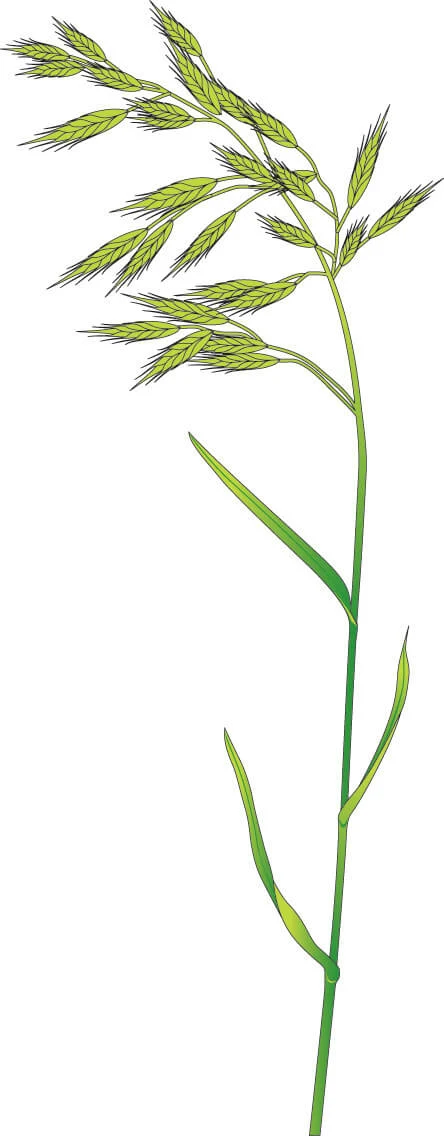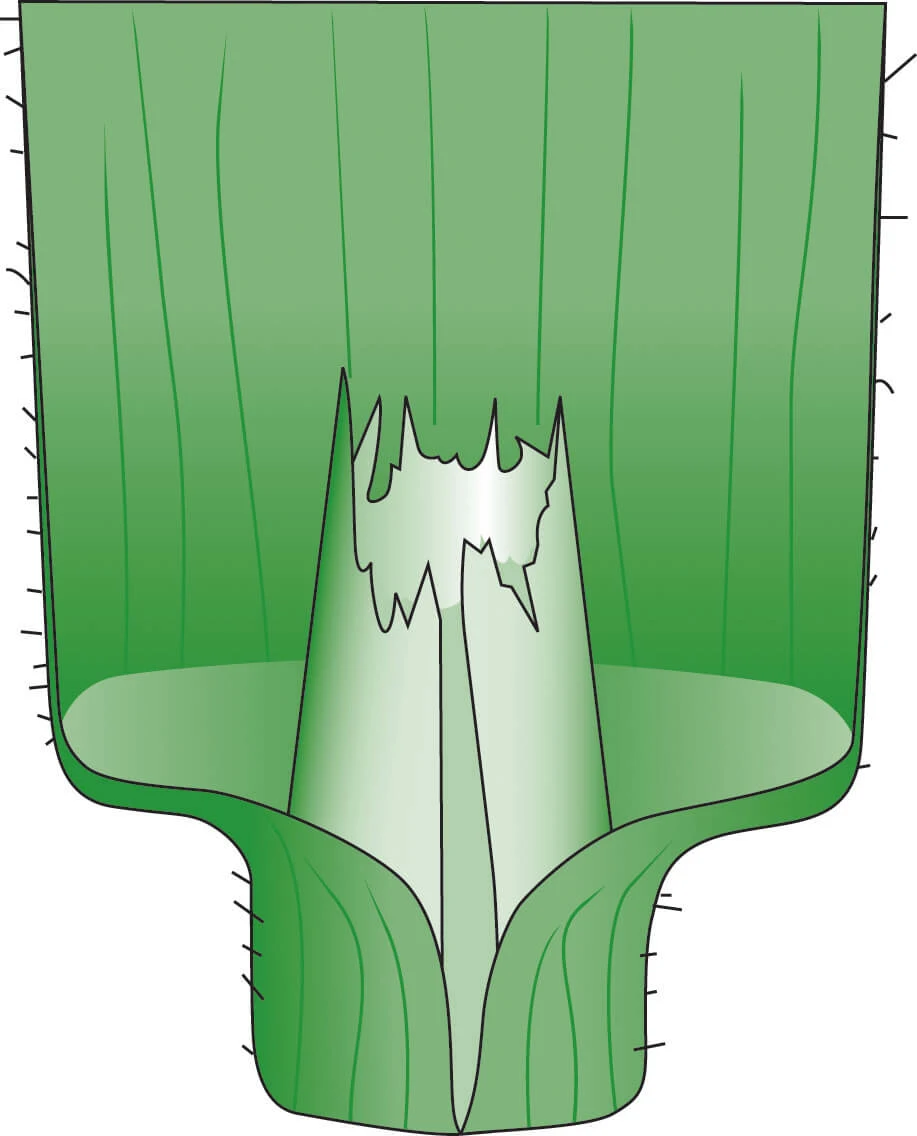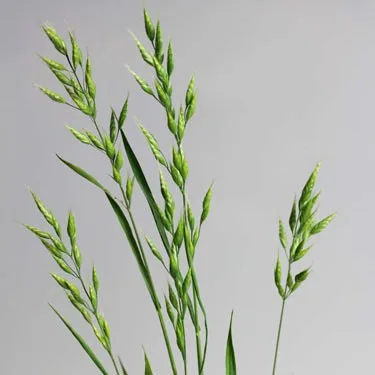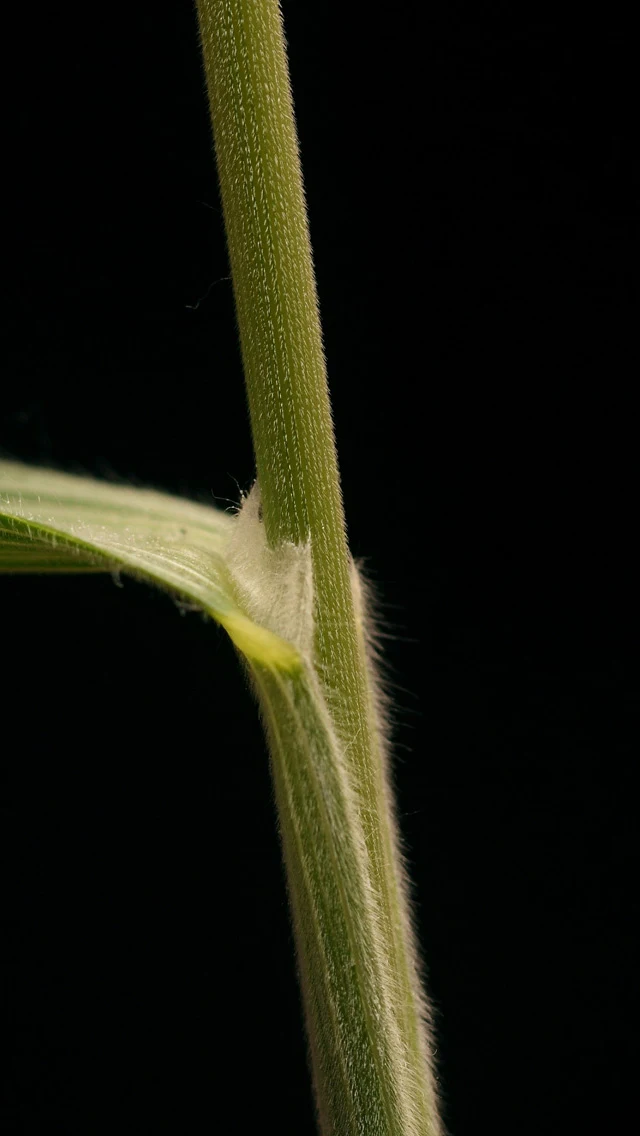
Meadow brome
Bromus commutatus
Auricles
Absent.
Leaf blade
Green, moderately hairy, finely pointed and rough. Rolled.


Importance
Increasingly a problem in field margins. Most common in England, rare in Scotland, Wales and Ireland.
Description
Loosely tufted, slightly hairy annual or biennial 40-120 cm. Panicle is generally erect, eventually drooping to one side. Spikelets are oblong, many flowered and 1.8-2.8 cm long with short awns.
Ligule

Short to medium: 1-4 mm, membranous becoming torn.
Lifecycle
Meadow brome completes its lifecycle within one year and does not reproduce from vegetative fragments. Seed is typically shed between May and October with emergence occurring between July and November.
Management
Cultural control and the use of non-cereal break crops can be a highly effective means of control. Deep cultivations, where the seed is buried, can be effective in reducing populations. Where no-till systems are favoured, a broad rotation and drilling after the seed has germinated in the autumn are the next most effective means of cultural control.
Late sowing (beyond the conventional autumn window) and spring crops will allow for actions to reduce populations. The seed does not remain viable across seasons and a single year’s fallow can be expected to reduce the seedbank by up to 90%. Extending this period to 18 months will further improve seedbank depletion, potentially completely.
There are no known herbicide resistance concerns with Meadow brome, however, the number of pre- and post-emergence herbicides available for control is considered limited.

Meadow brome ligule. Photo © HGCA.

Meadow brome flower heads.

On the left is rye brome (note the oval spikelet) and on the right is meadow brome (note the oblong spikelet)

Meadow brome flower head. © Blackthorn Arable.

Meadow brome flower head. © Blackthorn Arable.

Meadow brome ligule. © Blackthorn Arable.

Meadow brome ligule. © Blackthorn Arable.


